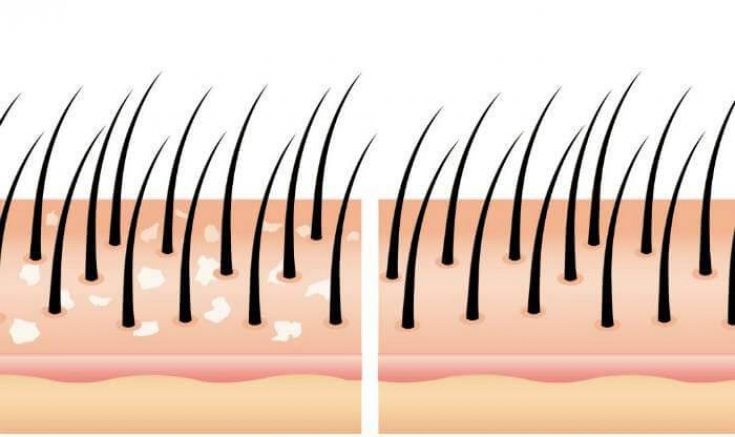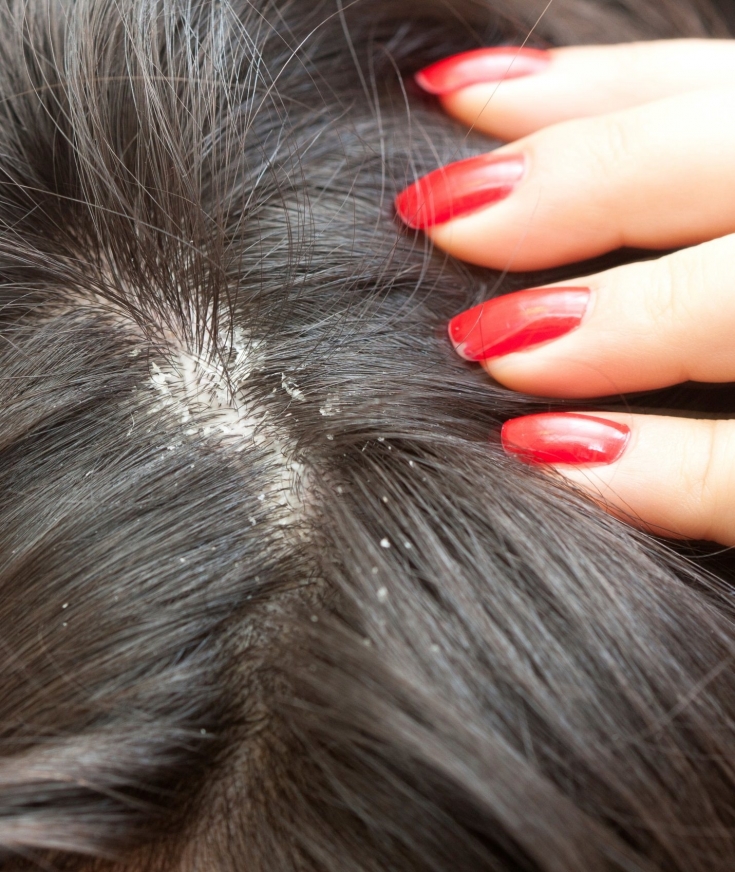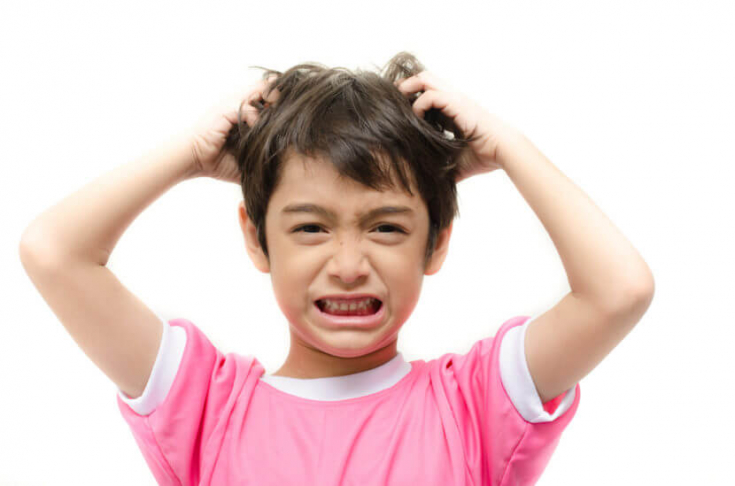Dandruff in medicine is a syndrome characterized by a high rate of detachment of dead epidermal cells (scaly skin particles) and is observed for a long time. Dandruff resembles bran, which is reflected in the Latin name of the term. As a rule, dandruff occurs on the scalp, but can be observed on the eyelashes, eyebrows, in the armpits, on the pubis. This syndrome refers to the initial stage of seborrheic dermatitis. Normally, the epidermis exists for 28 days, after this period its cells die and exfoliate, giving way to the appearance of new ones. This process is called regeneration. A number of certain factors lead to a decrease in the life of epidermal cells to 10 days or less, which is called the causes of dandruff.
To eliminate unpleasant symptoms, it is necessary to establish the causes of dandruff, which will help estet-portal.com.
- Dandruff causes: external and internal
- Hormonal causes of scalp seborrhea
- Neurogenic and immune causes scalp seborrhea
Dandruff Causes: External and Internal
In the mechanism of dandruff formation, the main role belongs to yeast fungi – Pityrosporum oval. These microorganisms are present on the skin surfaces of every individual. But under the influence of certain factors, they begin to actively grow.

The skin of the scalp of a healthy person is inhabited by these fungi by 45%, the disorder of the functions of the sebaceous glands contributes to the rise of the indicator up to 70%.
Follow us on Facebook!
The causes of dandruff, which disrupt the functioning of the sebaceous glands, encourage the reproduction of yeast fungi, are divided into internal and external. A large number of mushrooms are covered with skin scales and fat, forming plaques. Exfoliation of these plaques causes itching, the appearance of a characteristic plaque on the hair – dandruff.
External or exogenous causes of dandruff
External factors for the formation of white scales on the hair include:
• Neglect of hair hygiene
Too frequent or, conversely, infrequent washing of hair contributes to the washing off of the protective water-lipid lubricant or its accumulation and the reproduction of fungi and pathogenic microbes. Also, the abuse of various styling products (varnishes, mousses, gels) plays a role in the occurrence of dandruff.
• Incorrect use of care products
Shampoo and various conditioners should be selected according to the type of scalp (oily, normal, dry). Detergent must be thoroughly rinsed from the hair. Washing your hair with hard water adversely affects the condition of the skin, sebaceous glands, and also makes it difficult to rinse your hair.
• Frequent dyeing and hot styling of hair
Leads to overdrying of the skin and disrupts the sebaceous glands.
• Using dirty or synthetic combs
• Irrational nutrition
Frequent consumption of too hot food, passion for fatty, spicy, spicy dishes or sweets contribute to increased separation of sebum, the reproduction of fungi and the appearance of dandruff.
• Disrupted ecology
Emissions into the air and into water bodies of industrial waste adversely affect the health of the skin in general, and in particular the head and hair. food consumption, which have been treated with various poisons and chemical fertilizers also affect the health of the skin and hair.
• Neglect of headgear
Excessive overheating or hypothermia of the head disrupts the nutrition of the hair follicles and the functioning of the sebaceous glands.

Internal or endogenous causes of dandruff
Factors affecting the function of the sebaceous glands from within the body include:
• Nervous strain
It leads to hormonal disruptions, metabolic disorders, and, accordingly, upsets the work of the sebaceous glands.
• Weakened immunity
Recently transferred SARS, a course of antibiotics, beriberi, etc. weakens the body's defense mechanisms, which provokes the growth of yeast fungi and pathogenic bacteria.
• Hormonal disorders
The excess of androgens in both sexes causes increased production of sebum, a change in its quality (the secret becomes thicker), which causes gluing of the epidermis scales and their subsequent exfoliation in whole areas – dandruff.
Read also: Braid to the waist: why our hair is aging
• Diseases of the skin and digestive tract
Pathology of the gastrointestinal tract leads to a violation of the absorption of nutrients, vitamins and trace elements, which leads to beriberi, hormonal disruptions, disorders of the skin glands. Skin diseases (eczema, atopic dermatitis, psoriasis and others) disrupt the functioning of the glands of the skin, including the scalp.
• Allergy
One of the causes of dandruff may be an allergic reaction to the headgear, more precisely, to the material from which it is made.
• Genetic predisposition
Persons who have close relatives who suffered from dandruff or seborrheic dermatitis are prone to developing dandruff.
• Physical and nervous fatigue
Read also: Diffuse alopecia in women: why hair falls out
Physical and mental overload weakens the immune system, which leads to a malfunction of all systems and organs, not excluding the skin.
Hormonal causes of scalp seborrhea
Seborrhea of the scalp often develops against the background of hormonal fluctuations – it usually occurs in adolescents during puberty, in pregnant women, in perimenopausal women, sometimes even before the onset of menstruation.
Specialists recommend not to forget about the patient's hereditary predisposition to the development of seborrhea of the scalp, which you should definitely ask the patient at the reception. In addition, when taking an anamnesis, you should find out everything about possible diseases associated with metabolic disorders, with endocrine pathologies.
Read also: "Causes of gray hair and treatment of gray hair"

If necessary, additional studies should be ordered to rule out the connection of seborrhea of the scalp, for example, with the presence of diabetes mellitus, diseases of the thyroid gland or gonads.
Neurogenic and immune causes of scalp seborrhea
The appearance of seborrhea of the scalp is often noted against the background of stress, lack of sleep, and some diseases of the nervous system. For example, patients with Parkinson's disease or paralysis of the body almost always have some degree of seborrhea.
YouTube channel







Add a comment